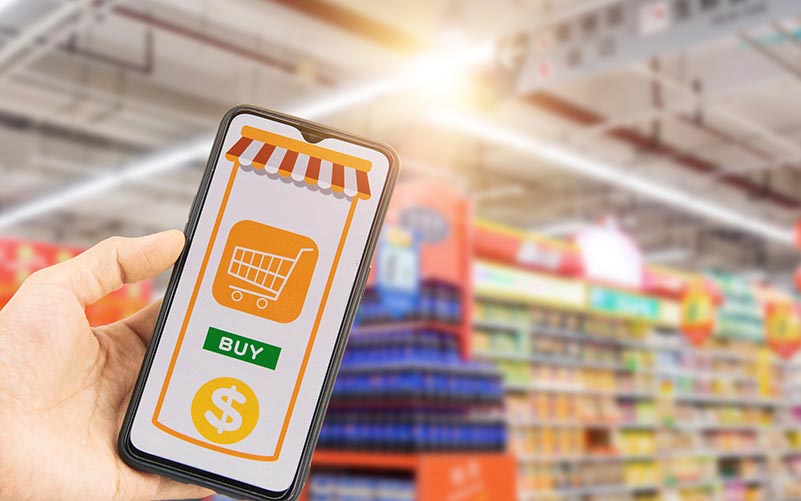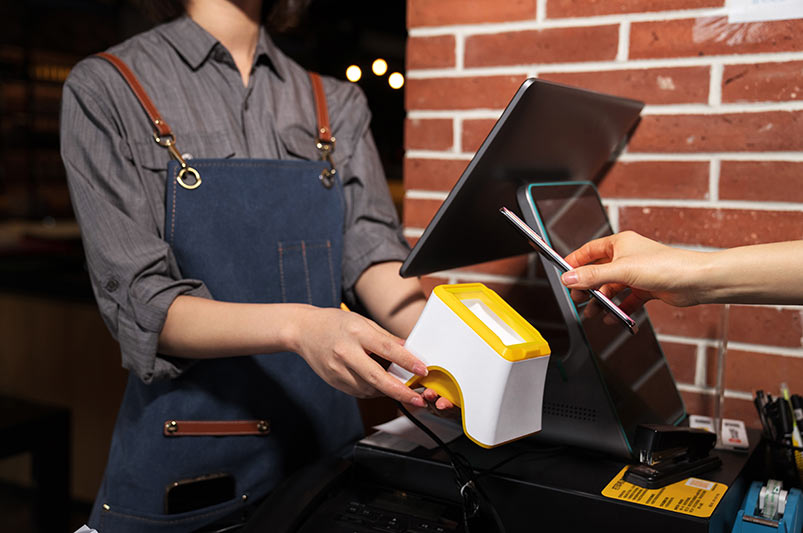UAE Adopts QR Code Payments: A New Milestone in Global Payment Trends
The UAE has recently announced a collaboration with the National Payments Corporation of India (NPCI) and Network International to introduce QR code payment systems in the country. This initiative will not only be implemented across more than 200,000 point-of-sale terminals in the UAE but will also provide a more convenient payment option for both tourists and local residents. This article delves into the background of this collaboration, the implementation plan, and its impact on the UAE and global QR code payment trends. By analyzing the application of QR code payments worldwide and their pros and cons, it forecasts the future development of this payment method globally, offering readers comprehensive insights and references.
Background
The UAE has recently announced a collaboration with NPCI and Network International to introduce QR code payment systems in the country. This partnership, which officially launched on July 8, 2024, marks a significant step forward in promoting digital payment methods in the UAE. This collaboration will enable QR code payments at more than 200,000 point-of-sale terminals across the UAE, greatly facilitating payment methods for tourists and local residents.
NPCI is a major fintech organization in India, established in 2008 to promote the development of nationwide payment and settlement systems. Its Unified Payments Interface (UPI) has become the core of India's digital payments. As of 2023, UPI's transaction volume exceeded 10 billion transactions, showcasing its tremendous success in the digital payment sector. Network International is a leading digital payment solutions provider in the Middle East and Africa, continuously expanding its market share and technological influence in recent years.
As a key commercial and tourism hub, the UAE actively introduces QR code payment systems to meet the growing demand for electronic payments. According to statistics, the UAE welcomes over 16 million international tourists annually, which imposes higher requirements on the convenience and security of payment systems. QR code payments have demonstrated their efficiency and convenience globally, especially in countries like China and India, where QR code payments have become mainstream. In 2023, China's QR code payment transaction volume reached CNY 40.6 trillion, while India's annual transaction volume exceeded 12 billion INR.
The introduction of QR code payment systems in the UAE is not only a significant upgrade to its payment infrastructure but also reflects the changing global payment trends. With advancements in technology and shifts in consumer payment habits, QR code payment systems are increasingly favored by more countries and regions due to their speed, convenience, and security. The UAE's government and business community recognize this trend and actively promote the implementation of this payment method to secure a more favorable position in the global digital economy.
This collaboration will also help the UAE further integrate into the global fintech ecosystem, attracting more international tourists and investors. It showcases the UAE's foresight and leadership in technological innovation and payment solutions. By leveraging NPCI and Network International's technology and expertise, the UAE's QR code payment system will rapidly proliferate, enhancing the payment experience for local residents and tourists and promoting the digital transformation of the entire economy. This initiative not only signifies progress in the UAE's payment system but also sets a new benchmark for the development of QR code payments worldwide.
Implementation of QR Code Payments in the UAE

Details of the Collaboration and Implementation Plan
The collaboration between NPCI and Network International is a crucial step in advancing QR code payments in the UAE. According to the agreement, NPCI will provide its successful UPI technology from India, while Network International will be responsible for its promotion and implementation in the UAE. On July 8, 2024, both parties announced the official launch of this collaboration, aiming to enable QR code payments at more than 200,000 point-of-sale terminals in the UAE.
The specific implementation plan includes:
- Building Technical Infrastructure: Network International will assist UAE merchants and point-of-sale terminals in upgrading hardware and software to support QR code payments. This involves installing or updating payment terminal equipment to ensure compatibility with the UPI system.
- Merchant and Consumer Education: To ensure the smooth promotion of QR code payments, both parties will jointly conduct large-scale educational and training activities to help merchants and consumers understand and use this new payment method. These activities will be conducted online and offline, including promotional videos, social media campaigns, and on-site training courses.
- Promotion and Incentive Programs: To encourage merchants and consumers to adopt QR code payments quickly, both parties plan to launch a series of promotional activities and incentive programs. For example, early adopters will receive transaction fee discounts, coupons, and cashback offers.
Impact on Tourists and Local Residents
The introduction of QR code payment systems will have a profound impact on both tourists and local residents in the UAE. For tourists, the widespread adoption of QR code payments will significantly enhance payment convenience. The UAE attracts over 16 million international tourists annually, many of whom come from countries where QR code payments are already prevalent, such as China and India. By introducing a familiar payment method, these tourists will find it easier to shop, dine, and entertain in the UAE without the need to carry large amounts of cash or frequently use credit cards.
For local residents, QR code payments will offer a more convenient and secure payment option. Traditional payment methods, such as cash and credit cards, carry certain risks and inconveniences. QR code payments can not only complete transactions quickly but also enhance security through dynamic QR code technology, reducing the risk of payment information theft. Additionally, the widespread adoption of QR code payment systems will drive the digital transformation of local merchants, improving their operational efficiency and service quality.
Global Trends in QR Code Payments
Application of QR Code Payments Worldwide

The application of QR code payments worldwide has shown significant growth momentum. For example, China and India have set successful examples in the QR code payment field, providing valuable references for other regions. China's QR code payment market is highly mature, with the transaction volume of its two major payment platforms, WeChat Pay and Alipay, reaching CNY 40.6 trillion by 2023, occupying the majority of the mobile payment market. Additionally, India's UPI system has also achieved great success in promoting QR code payments. In 2023, UPI's transaction volume exceeded 10 billion transactions, demonstrating its enormous potential in the digital payment sector.
In Europe and North America, QR code payments are also gradually gaining popularity. For example, in the UK, more and more merchants are beginning to accept QR code payments with government and corporate support. In 2022, the UK's QR code payment transaction volume reached GBP 2 billion, a 30% increase from the previous year. In the US, the application of QR code payments is mainly concentrated in the retail and restaurant industries. Statistics show that by 2023, over 52% of restaurants in the US have adopted QR code menus, providing contactless ordering and payment services.
Advantages and Challenges of QR Code Payments
QR code payments have rapidly gained popularity worldwide mainly due to their numerous advantages. First, QR code payments offer extremely high convenience. Users only need to scan a QR code to complete the payment, eliminating the need to carry cash or credit cards, greatly simplifying the payment process. Second, QR code payments provide high security. Through dynamic QR code technology, payment information can be updated in real time, effectively preventing payment information from being stolen or tampered with.
However, the promotion of QR code payments also faces some challenges. The first challenge is security risks. Despite the high security of QR code payments, there are still criminals who use fake QR codes for fraud. For example, in a case in Singapore in 2023, a woman lost SGD 20,000 after scanning a fake QR code for a survey. The second challenge is user education. While QR code payments are already widespread in some countries, in other regions, especially some developed countries, many consumers are still unfamiliar with this payment method and need time to accept and get used to it.
Additionally, QR code payments face technical compatibility challenges. Different countries and regions may have incompatible QR code payment systems, increasing the complexity of cross-border payments. For example, WeChat Pay and Alipay in China still need to overcome some technical and regulatory obstacles to be seamlessly used in Europe.
References
NPCI Brings QR Code-Based UPI Payments to UAE in Partnership With Network International
- Source: Gadgets360
- Link: NPCI Brings QR Code-Based UPI Payments to UAE
QR Code Statistics for 2024: Usage, Trends, Forecasts, and More
- Source: QRCodeChimp
- Link: QR Code Statistics for 2024
Latest QR Code news
- Source: Bleeping Computer
- Link: Latest QR Code news
News about the collaboration between NPCI and Network International
- Source: India Express
- Link: Paytm Bags NPCI Approval
Global QR Code Payment Trends and Statistics
- Source: Statista
- Link: QR Code Usage Statistics
Application of QR Code Payments in the Restaurant and Retail Industries
- Source: Restaurant.org
- Link: QR Code Menus in Restaurants
Singapore QR Code Scam Case
- Source: The Straits Times
- Link: Singapore QR Code Scam
